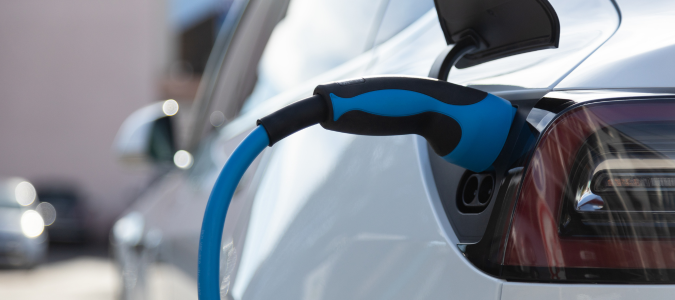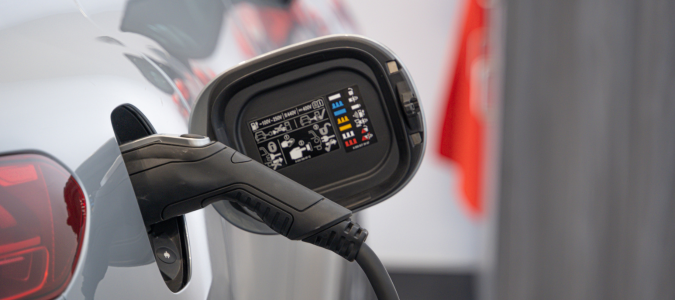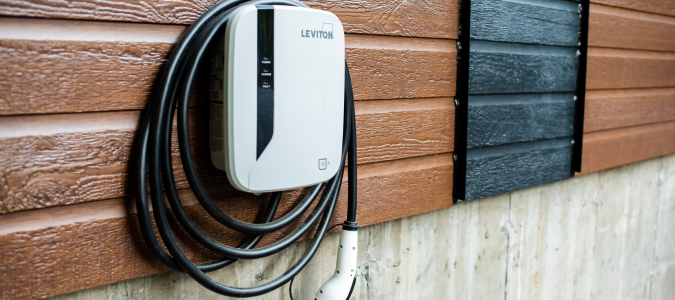Electric vehicles are great to have because you never have to make a pit stop at the gas station, but many homeowners don’t realize that charging an EV is more complicated than plugging it into the wall socket. Not only do you need to install a charging station, but you might also need to secure a permit before doing so. In addition, you need to understand the different EV charging levels.
Everything You Need to Know About EV Charging Levels
The Society of Automotive Engineers defined three EV charging levels: 1, 2 and 3. Homeowners typically use level 1 or 2 for EV home charging. Here’s a breakdown of the three levels to help you choose the best one for your needs.
Level 1
Most automakers include a level 1 charger with new EV purchases. You can plug this charger into your 120-volt outlets at home, making it a convenient option. However, never plug it into an extension cord because that can overload the circuit and damage the charger.
While level 1 chargers are the most affordable and accessible, they’re not for those with fast-paced lifestyles. It’s a slow charger, only able to add two to four miles per hour, depending on your EV model. It’s far less efficient than the other two charging levels and can cost you more money in the long run.
If you drive less than 20 miles daily, you might get by with a level 1 charger. But, most car owners will find it insufficient for their lifestyle.
Level 2
Level 2 charging requires 240 volts, using three to four times more power than level 1 chargers. It can get the job done six to eight times faster, providing EVs with 12 to 32 miles worth of driving per hour. But the rate of charging depends on your EV’s hardware.
Most 240-volt level 2 chargers deliver 24 amps or 6.0 kW, but some can produce up to 80 amps or 19.2 kW. However, not a lot of EVs can charge at that level. Have an electrician check your EV’s charging capacity before investing in a powerful level 2 charger.
While level 1 chargers usually come with the EV, level 2 chargers require higher upfront costs. You must buy the device itself and equip your home with higher electrical capacity. Of course, there’s the installation fee as well. The good news is most states incentivize the use of level 2 chargers.
Level 2 chargers are popular for home use, but you’ll also see them in public spaces.
Level 3
Level 3 chargers, also known as DC fast chargers, work at lightning speed. Using 400 to 800 volts, they can give your EV 100 to 250 miles in 30 to 45 minutes. They’re perfect for long road trips that require you to charge along the journey. You can tell level 3 chargers apart from the other two levels by their sockets. They have additional pins to accommodate the higher voltage.
Level 3 chargers can deliver anywhere from 50 kW to 350 kW but are limited to your EV’s charging capacity. If your car can only handle 50 kW, the charger will work at this level even if it can go up to 350 kW. Also, level 3 chargers slow down as your EV’s battery nears 80% to prevent overheating. If you’re in a hurry, it’s best to charge to 80% instead of going all the way.
While level 3 chargers deliver impressive speed, they’re not practical for home use. They’re expensive and require significant updates to home electrical systems. That’s why they’re better for public charging stations.
Can’t decide which of the EV charging levels is best for you? Let a licensed electrician help. They will assess your home electrical system and EV’s battery capacity and provide their recommendations. They can install the charging station for you and ensure everything works smoothly.
How Long Does It Take to Charge an EV?
Charging time is crucial for EV drivers because it affects their lifestyle. If you’re always on the go, you need a fast charger that keeps up with you.
Unfortunately, there’s no way to determine the exact charging time of an EV because several factors come into play. These include the car’s battery size and the charging point’s speed. For example, level 2 chargers work five times faster than level 1 units. Even the weather and the battery pack’s temperature have an effect.
Charging time can take anywhere from 30 minutes to over 12 hours. Here are some estimates to help you gauge your EV’s charging time.
Charging at Home
Home charging points usually have a 3.7 kW or 7 kW power rating. Those at 3.7 kW are slower, requiring around 16 hours to deliver a full charge. Meanwhile, a charger with a 7 kW rating can do the job in under 8 hours. You can plug in your EV before bed and wake up to a full charge.
While 22 kW home chargers are available on the market, they’re not a practical option for at-home charging. It requires three-phase power to operate, something most homes can’t accommodate.
Charging at Public Stations
If you’re in a hurry to get to your destination, many charging stations have rapid charging. A 150 kW rapid charger can bring an EV with a 60 kW battery from empty to 100% in 30 minutes. It will cost you more, but it’s worth it for the time you get to save. Note that only full-battery EVs are compatible with rapid chargers. Plug-in hybrid EVs don’t have this feature.
If you’re not in a rush and want to save money, charging stations also have 7 kW and 22 kW chargers. The former will need around 8 hours to give you a full charge, while the latter requires around 3 hours. You can leave your EV to charge while you go about your errands. All EVs are compatible with these charging points but will only charge at their maximum capacities.
Using the Top-Up Technique
Regardless of your EV’s battery size or the charger you use, the top-up technique is the most efficient way to juice up your car. Plug in your EV whenever you park it, whether at home, the office or the gym. That way, you won’t have to worry about how long it takes to charge your car from empty to full.
Topping up whenever possible will ensure you have enough charge to reach your next destination. It also makes good use of the time your EV is parked. Once you’re home, leave it for overnight charging so it’s ready to go the next day.
Do I Need a Permit to Install an EV Charger?
Before you can cruise down the highway in your new EV, there are a few requirements to take care of. Some municipalities require a home inspection and electrical permit for a new EV charging circuit installation. However, not all cities and jurisdictions require pulling a permit for Level 2 chargers. Some models have a corded 50A plug that can be plugged into the wall if the customer has 240v 50A outlets. While it might seem like a hassle, there are benefits to undergoing this process.
With a permit, you can be sure the installer will adhere to your jurisdiction’s electrical and building codes. You can charge your EV with peace of mind, knowing everything’s running safely. In addition, permits serve as documentation you can present to your insurance company or prospective buyers if you’re selling in the future.
Contact a licensed electrician to take care of the technical details and acquire the permit on your behalf. You can also consult them about the permit requirements in your area. In addition, they can help coordinate the home inspection if your municipality requires it. Once you’ve secured a permit, they’ll assist you in selecting the correct EV charger and installing it for you.
Turn to a Licensed Professional for Your EV Charging Concerns
Purchasing your first EV can involve a learning curve. Some challenges, such as charging, come with the vehicle. You must secure a permit and determine which charging level is best for your EV and home’s electrical system.
It can all get very technical, so a licensed electrician can help you. The electrician will take you through the entire process and ensure you’ll have years of smooth charging experience. They can even help you with other electrical issues, like determining what size generator you need for your home.
ABC Can Install a Home EV Charger
Can you imagine never having to go to a gas station ever again? You can enjoy all EVs’ benefits by having an electric vehicle and an in-home EV charger. ABC’s licensed electricians can help you decide on the best EV charger for your home and handle the EV charger installation so you can get on the road. They can also help with other electrical issues, like bad electrical panels.



